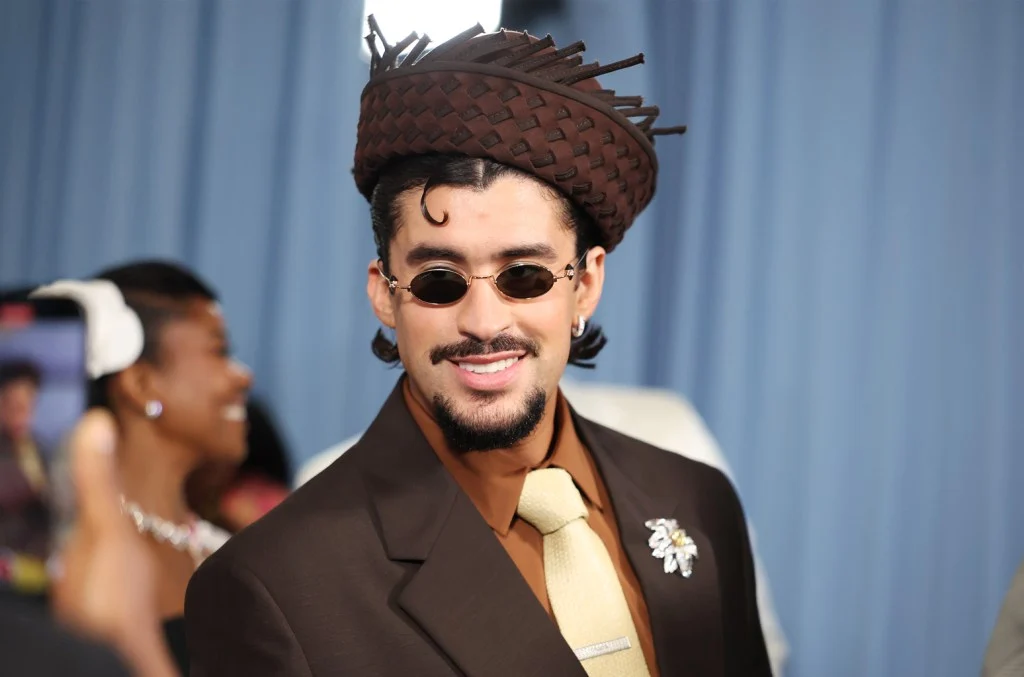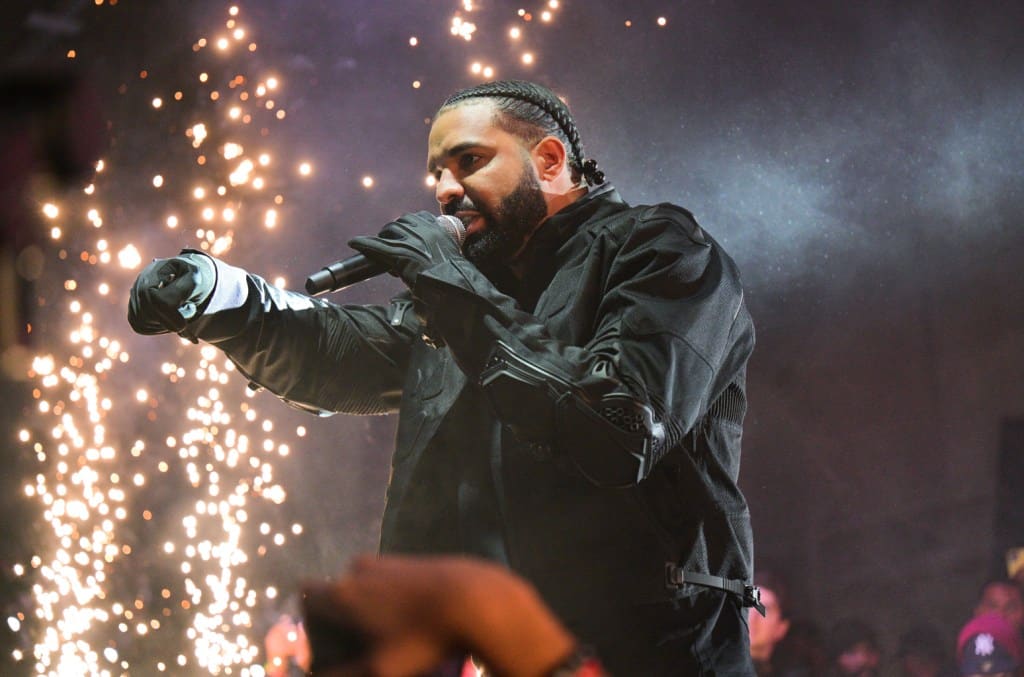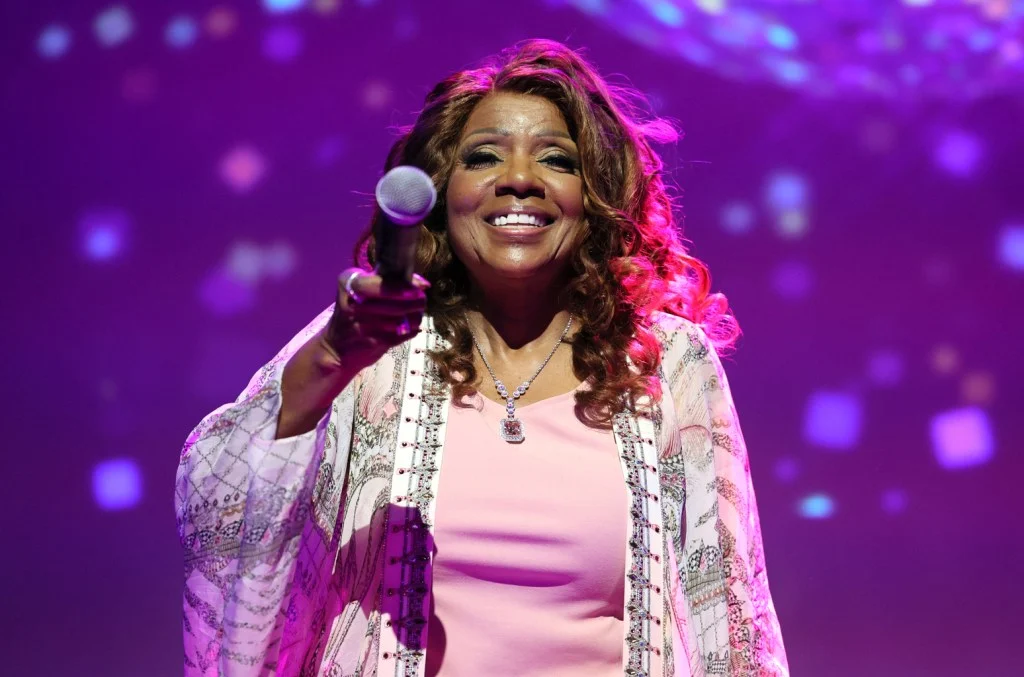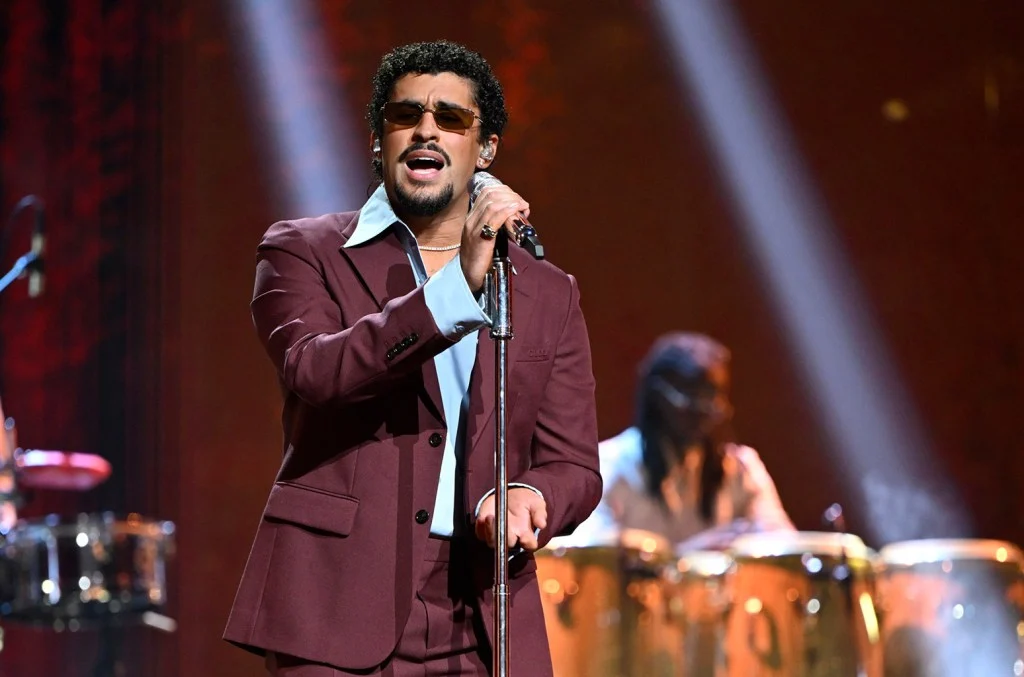Music
Page: 296
Fresh off announcing his massive Debí Tirar Más Fotos World Tour, Bad Bunny stunned at the 2025 Met Gala on Monday (May 5), where he once again honored his Puerto Rican roots. The Grammy-winning superstar stunned in a chocolate brown Prada suit and a matching pava (straw) hat emblematic of the jíbaro (a Puerto Rican […]
Seems like Drake is making good on his statement that he’s working on new material that will address this past year. A clip has surfaced on social media of OVO artist Smiley speaking on Drake being locked in and concentrating on making new music, saying that the Toronto rapper has been working on new material […]
In light of the controversy surrounding Kehlani‘s recently canceled performance at Cornell University, SummerStage has now pulled the plug on the singer’s scheduled performance in Central Park, under advisement from New York City Mayor Eric Adams’ office.
On Monday (May 5), the festival announced that its Pride With Kehlani benefit show — which had been slated for June 26 as part of the city’s annual summer concert series — would no longer be part of this year’s programming. “We have been notified by the Mayor’s Office that they have concerns for security and safety issues,” reads a statement on SummerStage’s Instagram. “Those concerns are due to the controversy surrounding Cornell University’s decision to cancel Kehlani’s concert at the University, as well as security demands in Central Park and throughout the City for other Pride events during that same period.
“We strongly and emphatically believe in artistic expression of all kinds,” the post continues. “However, the safety and security of our guests and artists is of the utmost importance … While artists may choose to express their opinions, their views may not necessarily be representative of the festival.”
At press time, Pride With Kehlani is still listed on Central Park’s online SummerStage schedule.
The move to cancel comes just over a week after Cornell announced that it had rescinded its invitation for Kehlani to headline this year’s Slope Day, the school’s annual event for students celebrating the last day of classes. In an email from university President Michael I. Kotlikoff obtained by The New York Times, he wrote that the decision had been made after learning that the “Gangsta” singer had “espoused antisemitic, anti-Israel sentiments in performances, videos and on social media.”
Shortly afterward, Kehlani posted a video clarifying “for the millionth time, that I am not antisemitic nor anti-Jew.”
“I am anti-genocide, I am anti- the actions of the Israeli government, I am anti- an extermination of an entire people, I am anti- the bombing of innocent children, men, women — that’s what I’m anti,” they continued at the time.
In response to the SummerStage cancellation, Kehlani reposted the festival’s statement on Instagram Stories and wrote “lol.” The musician also snapped a selfie and revealed, “I just found that one out on instagram by the way.”
“I’m so deeply grounded in my purpose, my mission, my art, my contribution,” the “After Hours” artist added in another post on Stories. “Back to this album. See you this weekend LA!”
Kehlani has been vocal in their pro-Palestine stance throughout Israel’s ongoing war against Hamas, which began immediately after the terrorist group killed 1,200 people and kidnapped more than 250 others at the Nova Music Festival on Oct. 7, 2023. Since then, more than 52,000 Palestinians have been killed in Gaza, according to CNN, which cites the Palestinian Ministry of Health.
In their 2024 “Next 2 U” visual, Kehlani wore kaffiyehs and featured dancers waving Palestinian flags. Before that, they were one of several musicians who signed the 2023 Artists Against Apartheid letter.
See the SummerStage statement below.
Maggie Rogers is headed back to her alma mater to help send off this year’s class of graduates, with the singer/songwriter announcing Monday (May 5) that she’ll speak at the 2025 New York University Tisch School of the Arts commencement ceremony later in the month. Sharing a nine-year-old photo of herself in her purple graduation […]

Chris Brown turned 36 years old on Monday (May 5), and he has extra reason to celebrate his birthday after the RIAA announced that he’s collected another diamond certification with 2011’s “Look at Me Now.” After going eight times platinum in 2021, “Look at Me Now” earned diamond status on Monday. With assists from Lil […]
Gloria Gaynor is setting the record straight about her stance on an important but polarizing subject: feminism.
In a new interview with Metro published Monday (May 5), the disco legend revealed that she does not identify as a feminist when asked what people often get wrong about her. “The biggest misconception about me? It may be dangerous to say this, but that I’m a feminist,” she said.
“People say it to me, ‘And since you’re a feminist …,’” she continued. “Uh, no. Not really. I love men.”
Noting that she grew up with five brothers, Gaynor added, “I love men who know who they are and are strong enough to take their place, but also strong enough to recognize a woman’s strengths and … allow her to exercise those strengths and realize that we are to be partners and not opponents.”
Trending on Billboard
So, there you have it: Gaynor, whose Billboard Hot 100-topping 1978 smash “I Will Survive” is widely regarded as one of the most iconic feminist anthems of all time, does not consider herself a feminist. Her comments have already sparked pushback online, with many people pointing out that, despite her implication, loving men and feminism are not mutually exclusive. By definition, feminism is the “belief in and advocacy of the political, economic and social equality of the sexes expressed especially through organized activity on behalf of women’s rights and interests,” according to Merriam-Webster.
“So Gloria Gaynor doesn’t know what feminist is … got it,” one person wrote on X.
“So Gloria Gaynor isn’t a feminist because she loves men?” wrote another user. “Feminism isn’t anti-man, it’s just pro-human rights. But sure, let’s ignore that. i love men and I‘m still a feminist.”
Billboard has reached out to Gaynor’s rep for comment.
The Grammy winner’s new interview comes a few weeks after she announced that her new EP, Happy Tears, will arrive June 6. The first taste of the five-track project came in February, when Gaynor dropped single “Fida Known,” which she told Metro is her favorite song of the bunch.
“The song is all about helping people to look back on the things that they’ve overcome and to recognize what they’ve come through,” she told the UK publication. “It’s, ‘If I’d have known this, I wouldn’t have done that,’ but you didn’t know that, and you still made it through.”
Gaynor added, “The song sort of continues where ‘I Will Survive’ left off.”

Billie Eilish fans in Amsterdam are feeling so f–king special after witnessing the star cover Radiohead‘s “Creep” at Ziggo Dome on Sunday night (May 4).
In videos posted by concertgoers, Eilish departs from her regularly scheduled setlist to deliver a stunning rendition of the rock band’s signature hit, joined on stage by two backup vocalists and an electric guitar player. Taking the main melody, the nine-time Grammy winner’s piercing voice soars over lush harmonies provided by the other singers, with Eilish adding her own tasteful riffs throughout.
“But I’m a creep, I’m a weirdo,” she sings, closing her eyes to the music. “What the hell am I doin’ here?/ I don’t belong here.”
Trending on Billboard
At one point toward the end of the performance, the musician spots something in the distance that makes her crack up, and is unable to stop laughing. Even as she raises her microphone to start singing again, she bursts into another fit of chuckles, eventually composing herself enough to deliver the song’s final haunting bars.
Released in 1992 as Radiohead’s debut single, “Creep” eventually entered the Billboard Hot 100 in June 1993 before peaking at No. 34 the following September. It’s featured on the band’s first album, Pablo Honey, which reached No. 32 on the Billboard 200.
Eilish’s performance of the track comes midway through her Hit Me Hard and Soft Tour, which kicked off in September in support of her 2024 album of the same name. After touring North America through late December, the “Lunch” singer has spent the past couple of months traveling around Australia and Europe, with her trek set to conclude in Ireland in late July.
One venue at which she’ll set up shop for six nights on the road later is the O2 Arena in London, where she previously performed in 2019. While she was there, none other than Radiohead’s Thom Yorke caught her performance, after which he told British newspaper The Times, “I like Billie Eilish.”
“She’s doing her own thing,” he added at the time. “Nobody’s telling her what to do.”
Alex Warren’s “Ordinary” ascends a spot to No. 1 on the Billboard Global 200. The song marks the singer-songwriter’s first leader on the chart.
Meanwhile, Lady Gaga and Bruno Mars’ “Die With a Smile” scores a 16th week atop the Billboard Global Excl. U.S. survey. The ballad first hit No. 1 on the list last September.
Elsewhere, WizTheMC earns his first top 10 on both tallies with “Show Me Love.”
Trending on Billboard
The Billboard Global 200 and Global Excl. U.S. charts, which began in September 2020, rank songs based on streaming and sales activity culled from more than 200 territories around the world, as compiled by Luminate. The Global 200 is inclusive of worldwide data and the Global Excl. U.S. chart comprises data from territories excluding the United States.
Chart ranks are based on a weighted formula incorporating official-only streams on both subscription and ad-supported tiers of audio and video music services, as well as download sales, the latter of which reflect purchases from full-service digital music retailers from around the world, with sales from direct-to-consumer (D2C) sites excluded from the charts’ calculations.
“Ordinary” crowns the Global 200 with 82.5 million streams and 6,000 sold worldwide April 25-May 1. The song by the Carlsbad, Calif., native became a viral hit, boosted by his performance of it in March on Netflix’s Love Is Blind. It has since topped 11 charts in Billboard’s Hits of the World menu, spent seven weeks and counting atop the Official UK Singles chart and hit No. 2, as of this week, on the U.S.-based Billboard Hot 100.
“Die With a Smile” drops to No. 2 after 18 weeks atop the Global 200 beginning last September (second only to the 19 weeks at No. 1 for Mariah Carey’s “All I Want for Christmas Is You” since the chart began). The rest of the ranking’s top five holds in place: ROSÉ and Bruno Mars’ “APT.” at No. 3, after 12 weeks at No. 1 starting in November; Billie Eilish’s “Birds of a Feather” at No. 4, following three weeks at No. 1 last August; and Benson Boone’s “Beautiful Things” at No. 5, after it logged seven weeks on top in February-April 2024.
WizTheMC’s “Show Me Love” soars 19-10 on the Global 200 with 37 million streams (up 22%) and 1,000 sold (up 13%) worldwide. The track by the South African-German multihyphenate, based in Toronto, became his first Billboard chart entry in March. It concurrently bounds 11-6 on Global Excl. U.S.
“Die With a Smile” collects a 16th week at No. 1 on Global Excl. U.S., with 66.9 million streams (down 1%) and 3,000 sold (down 2%) outside the U.S. The song boasts the second-longest rule in the chart’s archives:
19 weeks at No. 1, “APT.,” ROSÉ & Bruno Mars (2024-25)
16 weeks, “Die With a Smile,” Lady Gaga & Bruno Mars (2024-25)
14 weeks, “All I Want for Christmas Is You,” Mariah Carey (2021-25)
13 weeks, “Flowers,” Miley Cyrus (2023)
13 weeks, “As It Was,” Harry Styles (2022)
The rest of the Global Excl. U.S. is also steady week-over-week: “APT.” at No. 2; “Ordinary” at its No. 3 best; JENNIE’s “like JENNIE” at No. 4, after hitting No. 3; and “Birds of a Feather” at No. 5, following three weeks at No. 1 last August.
The Billboard Global 200 and Billboard Global Excl. U.S. charts (dated May 10, 2025) will update on Billboard.com tomorrow, May 6. For both charts, the top 100 titles are available to all readers on Billboard.com, while the complete 200-title rankings are visible on Billboard Pro, Billboard’s subscription-based service. For all chart news, you can follow @billboard and @billboardcharts on both X, formerly known as Twitter, and Instagram.
Luminate, the independent data provider to the Billboard charts, completes a thorough review of all data submissions used in compiling the weekly chart rankings. Luminate reviews and authenticates data. In partnership with Billboard, data deemed suspicious or unverifiable is removed, using established criteria, before final chart calculations are made and published.
Natanael Cano, leader and creator of the corridos tumbados genre, defied the ban imposed by authorities in the Mexican state of Aguascalientes against narcocorridos on Saturday (May 3). During his performance at the Feria Nacional de San Marcos, he played a couple of songs with explicit references to figures of drug trafficking and glorification of crime. In response, the event organizers lowered the audio volume and turned off the lights, bringing the show to an end.
Videos on social media show the moment Cano responds to the request of some attendees at his concert during the Feria Nacional de San Marcos, who insisted on hearing “Cuerno Azulado,” a controversial song in which the musician talks about organized crime and its alleged ties to Mexican authorities.
Trending on Billboard
“‘Cuerno (Azulado)’ isn’t something you need to ask me for, my friend. ‘Cuerno’ is something you need to ask your government for. If you want it so badly, do something about it,” the singer responded to the crowd. “With all due respect, we came here to Aguascalientes to sing for you, my friend, and with all due respect to the people who are prohibiting us from singing and showcasing our art, we don’t give a damn. Do something about it yourselves, don’t come asking me for it here”
Natanael Cano’s performance, announced as one of the star acts of the legendary fair that has been held for 197 years, began with a series of corridos and ballads that adhered to the list previously approved by local authorities. However, after midnight, the setlist included “Pacas de Billetes,” a song referencing Joaquín “El Chapo” Guzmán, the notorious drug lord who is currently serving a life sentence in the United States following his conviction in 2019.
The musician continued with “El de la Codeína,” a song that references substance trafficking, which led the organizers to lower the sound volume in the venue. In response, the artist’s technical team activated its own audio system so Cano could keep performing. However, after finishing the song, the organizers turned off the lights, and the singer abruptly left the stage without the concert officially concluding.
Billboard Español has reached out to Natanael Cano’s representatives as well as festival organizers and the government of Aguascalientes for comment on what happened Sunday, but has not heard back as of press time.
The incident with Cano comes three weeks after the concert by corridos superstar Luis R. Conriquez at the Feria de Texcoco in the State of Mexico on April 11 ended in chaos when he refused to perform narcocorridos, complying with restrictions imposed by local authorities on expressions that glorify crime in public spaces.
Conriquez revealed in an exclusive interview with Billboard that local authorities had warned him not to perform narcocorridos during his show at the Feria de Texcoco. “They said that if I sang a corrido, they would cut off the sound.”
The local Congress of Aguascalientes on April 16 approved legislation to penalize “the dissemination of content, images and artistic or musical expressions that promote activities related to organized crime.” State authorities have not commented on what happened during Cano’s show.
Aguascalientes is one of 10 states (out of 32) in Mexico that have banned or restricted the dissemination of narcocorridos or expressions that glorify crime. Without a federal law, local governments enforce penalties ranging from hefty fines to up to a year in prison for those who perform music that promotes violence.
Grupo Firme, another of the superstar regional Mexican acts that performed at this year’s Feria de San Marcos, declined to play corridos during its concerts on April 19 and 20, as previously announced by vocalist Eduin Caz in a social media message saying the band was complying with the new restrictions.
Junior H, another leading figure in the corridos tumbados genre, is scheduled to perform at the palenque of the mentioned fair Wednesday (May 7).
The new bans implemented in Mexico have expanded to the United States. In an unprecedented move, the U.S. State Department announced on April 1 the revocation of work and tourist visas for the Mexican corridos group Los Alegres del Barranco after it displayed images of the leader of the Jalisco New Generation Cartel, Nemesio Oseguera Cervantes, also known as “El Mencho,” during a concert on March 29 at an auditorium at the University of Guadalajara.
After speculation that Bad Bunny would announce a global tour, the Puerto Rican star officially unveiled dates for Latin America, Europe, Australia and Japan. Set to kick off in November in the Dominican Republic, Bad Bunny will tour the world in support of his latest album Debí Tirar Más Fotos. He will wrap this year’s […]

 State Champ Radio
State Champ Radio 








